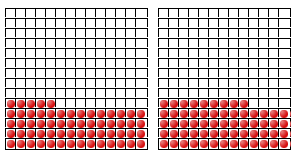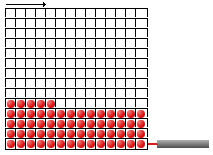Factoring large numbers into primes with light
Prime numbers hold the key to the bulk of today's encryption technologies. The reason is because it's easy to multiply two numbers together but it's hard to figure out what those numbers where before the multiplication.
As a simplified example imagine you have a message and you have two prime numbers.
For our example I picked: 3167 and 6781. I can send the product: 21475427 to a friend and they can then encrypt the message such that it can only be decrypted by someone who knows the original prime numbers.
The difficulty of factoring large numbers is that in encryption the numbers get very large. 400 or even 1000 digits long. So large in fact that it would take a normal computer eons to factor some of these numbers.
The traditional approach to trying to solve the factoring problem is to look for a factoring shortcut using math. For example a simple factoring shortcut is knowing that if a number ends in 0 or 5 that it's divisible by 5. More complex shortcuts try to predict the occurrences of a prime number.
My thought was to deconstruct the problem from the math world into the physical world. Imagine a box with marbles. The marbles go into the box and try to distribute themselves evenly across the bottom of the box.
Above you can see the box with 61 marbles. The box has movable sides so you can move the sides in and the marbles move into the available boxes. If the marbles fit evenly across a row with no extra marbles then you have found a factor. If on the other hand you go through all the possible box widths and you never get an even fit then you have found a prime number.
OK this example works for explaining how you could physically model prime factoring but unfortunately there aren't enough atoms in the universe to physically model the factoring of really large prime numbers.
However there may be something that can model this concept. Light. If we can get a laser light to act like a marble we may be able to get it to bounce back and forth in the box like so many marbles.
I don't know enough about optics to know if something like this is possible. If it is then the technique could be used on a scale much smaller then a marble. The illustration I show displays one laser but it may be possible to split the beam to simulate thousands of beams or even millions of beams within the same box of mirrors at the same time.
Too many secrets? We'll see.

